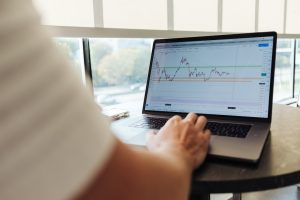Forex trading is an exciting and challenging activity that requires traders to be well-informed and strategic in their approach. One of the critical elements of successful forex trading is knowing how to calculate take profit. Take profit is the price level at which traders aim to close their position for a profit. In this article, we will discuss how to calculate take profit in forex and the factors that traders should consider when setting their profit targets.
The first step in calculating take profit is to determine the entry price and the stop-loss price. The entry price is the price at which a trader enters a position, while the stop-loss price is the price level at which the trader will exit the position to limit their losses. Both the entry price and stop-loss price are determined by a trader’s technical and fundamental analysis.
Once the entry and stop-loss prices are established, traders can use a variety of methods to calculate their take profit level. One popular method is the risk-reward ratio, which is the ratio of potential profit to potential loss. For example, if a trader’s stop-loss is set at 1.50 and their take profit target is set at 2.50, the risk-reward ratio is 1:2. This means that the trader is willing to risk one dollar to make two dollars in profit.
Another method for calculating take profit is the use of support and resistance levels. Support levels are the price levels at which buying pressure is strong enough to prevent the price from falling, while resistance levels are the price levels at which selling pressure is strong enough to prevent the price from rising. Traders can use these levels to set their take profit targets. For example, if a trader buys a currency pair at a support level of 1.20, they may set their take profit target at the next resistance level of 1.30.
Traders can also use technical indicators such as Fibonacci retracements and moving averages to calculate their take profit levels. Fibonacci retracements are a popular tool that traders use to identify potential support and resistance levels. Traders can use these levels to set their take profit targets. Moving averages are another useful tool that traders use to identify trends and potential reversal points. Traders can use moving averages to set their take profit targets based on the trend direction.
When calculating take profit, traders should also consider market volatility and liquidity. Highly volatile markets can result in larger price movements, which can increase the potential for profit but also increase the risk of losses. In contrast, less volatile markets may result in smaller price movements, which can limit the potential for profit but also reduce the risk of losses. Additionally, traders should consider market liquidity, which refers to the ease with which traders can buy or sell currencies. Highly liquid markets tend to have tighter bid-ask spreads, which can reduce the cost of trading and increase the potential for profit.
In conclusion, calculating take profit in forex requires traders to consider a variety of factors, including entry and stop-loss prices, risk-reward ratios, support and resistance levels, technical indicators, market volatility, and liquidity. By understanding these factors and using them to set their profit targets, traders can increase their chances of success in the highly competitive forex market. As always, traders should exercise caution and use proper risk management techniques to protect their funds and minimize their losses.





